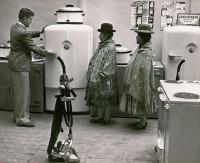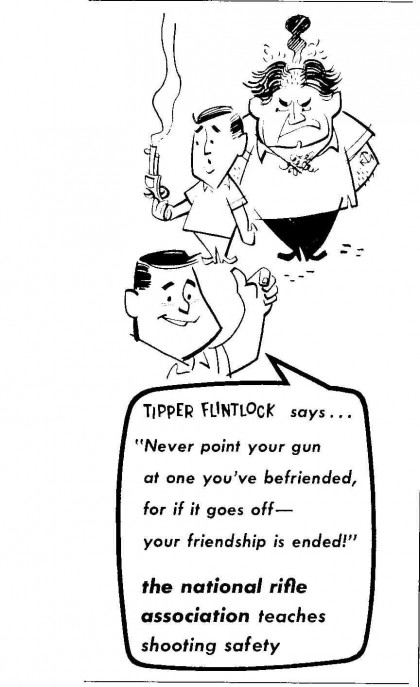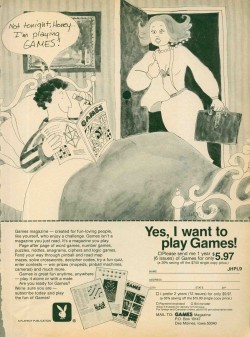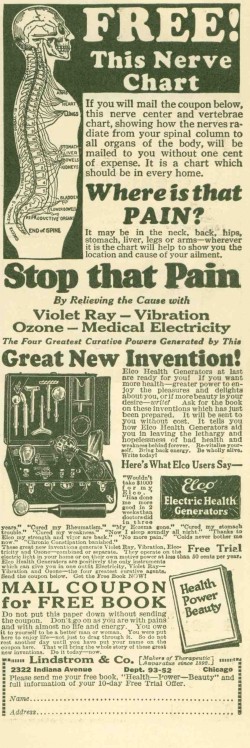Advertising
Obscene Torture
Cruel, sadistic prison guards subjecting inmates to horrible excruciations. It's a sad practice as old as history. But seldom before today has the vile ritual reached such depths as reported in this story.What exactly is the new nadir of torture? Here's the quote:
"Houghton also said that Botas and Viveiros forced him to watch a Burger King cartoon on his office computer and sing along to a jingle that accompanied the commercial. He said that all three officers laughed and 'were getting a kick out of it … that they could take advantage of me.'”
Oh, the humanity!
Recovering my senses, and getting over the evident confusion on the prisoner's part between "cartoon" and "commercial" (his mind is obviously shattered, after all), I had to ask, "Which Burger King commercial?" Not watching much TV, I'm unsure what's currently on the airwaves that might have registered on the radar of the abusive guards. But they were after all using a computer, presumably to visit YouTube. So I found five possible torture jingles.
Which one do you find most excruciating? Or do you have another candidate?
See them after the jump.
More in extended >>
Posted By: Paul - Thu Jul 17, 2008 -
Comments (3)
Category: Business, Advertising, Products, Crime, Stupid Criminals, Food, Government, Officials, Prisons, Torture
Follies of the Mad Men #3
[This image comes from Playboy for July 1980.]Let's suppose that you're a magazine named Playboy that encourages its readers to believe they can have lots of sex if they follow the advice of the magazine. Then you create another magazine in your empire called Games. You decide to advertise the latter in the former. And the theme of your ad is that anyone who reads the new magazine will not want sex anymore, even when a nubile young woman is thrusting herself upon the reader.
This is where your head should explode.
Posted By: Paul - Tue Jul 15, 2008 -
Comments (6)
Category: Business, Advertising, Games, Magazines, Sexuality, 1980s
Amazonian Miracle for Sale!
If only you had been reading Popular Mechanics magazine for February 1929! Then you could have purchased the same Purple Ray healing device that Wonder Woman uses! Okay, so it was a "Violet Ray." Same difference, right?
Posted By: Paul - Mon Jul 14, 2008 -
Comments (15)
Category: Business, Advertising, Products, History, Inventions, Medicine, Science, Technology, Comics, 1920s
Follies of the Mad Men #2

[From The Saturday Evening Post for December 16, 1967]
Whenever you put a giant woman in a skirt next to normal-sized people, the inevitable first thought engendered in the viewer is, "Can I see up her dress?" In this instance, the second thought is: "Is she going to pick up that car and use it as a marital aid?"
Posted By: Paul - Sat Jul 12, 2008 -
Comments (10)
Category: Business, Advertising, Giant People in Ads, Products, Fashion, Obsessions, Fetishes, Sexuality, Cars
Wrinkled Head Commercial
This is a Japanese TV commercial for COSMO Securities. It reminds me of the artwork of Giuseppe Arcimboldo -- if Arcimboldo were to have made his heads out of human bodies rather than food. (via 3yen)
Posted By: Alex - Thu Jul 10, 2008 -
Comments (0)
Category: Art, Advertising
Obama Lincoln

Check out this new portrait from famed painter Ron English, and read what happened in Boston when it was recently displayed.
Posted By: Paul - Wed Jul 09, 2008 -
Comments (3)
Category: Art, Business, Advertising, Government, Officials, History, Historical Figure, Politics
A Month of Spam
McAfee recently released the results of its S.P.A.M. experiment, which stands for "Spammed Persistently All Month." Fifty subjects volunteered to expose themselves to a month of intensive spamming.When I first noticed this headline, I imagined some kind of Ludovician Aversion Therapy experiment -- subjects strapped into chairs, eyes taped open, forced to view endless screens of spam until they started drooling and screaming for it to stop.
Unfortunately, the experiment wasn't that colorful. Instead, the subjects were simply "given permission to go where most Internet users would not dare, in order to discover how much spam they would attract and what the effects would be." I'm guessing this means they signed up with AOL.
The result: "the participants from 10 countries received more than 104,000 spam e-mails throughout the course of the experiment. That's 2,096 messages each - the equivalent of approximately 70 messages a day."
That surprised me. I thought they'd get a LOT more spam. I estimate my spam filter traps at least 70 messages a day, and I'm not trying to get the stuff like they were.
Posted By: Alex - Wed Jul 09, 2008 -
Comments (0)
Category: Advertising, Experiments
Foo Kin Chinese Food
My pal Pete Kaplan stumbled across this one. Who knew that up in Cooperstown, NY, they had such pronounced Liverpudlian accents?
Posted By: Paul - Wed Jul 09, 2008 -
Comments (7)
Category: Business, Advertising, Food, Restaurants, Weird Names
Selling Ice to Eskimos


If you want a real picture of a guy selling ice to eskimos, here's legendary pr stuntster Jim Moran in 1938, bundled in furs up in Alaska with an icebox, trying to make the aphorism a reality. (Photo from Mark Borkowski's Improperganda.)
Moran's most infamous stunt was when he tried to tie midgets to kites and fly them over Central Park. His idea was that the midgets would carry billboards on which he would sell advertising space. When the police told him he wasn't allowed to do it, he remarked, "It's a sad day for American capitalism when a man can't fly a midget on a kite over Central Park."
Posted By: Alex - Tue Jul 08, 2008 -
Comments (0)
Category: Business, Advertising
Follies of the Mad Men #1
Madison Avenue! Home to brilliant, canny advertising geniuses, who can convince millions of people to buy or believe anything! And then again, even Homer nodded.Yes, it's true. Back in 1962, some genius of a press agent thought the image of the National Rifle Association could be improved by creating a cartoon spokesman who would offer rhymed messages about not accidentally offing your friends.

Posted By: Paul - Mon Jul 07, 2008 -
Comments (2)
Category: Business, Advertising, Guns, NGOs

| Who We Are |
|---|
| Alex Boese Alex is the creator and curator of the Museum of Hoaxes. He's also the author of various weird, non-fiction, science-themed books such as Elephants on Acid and Psychedelic Apes. Paul Di Filippo Paul has been paid to put weird ideas into fictional form for over thirty years, in his career as a noted science fiction writer. He has recently begun blogging on many curious topics with three fellow writers at The Inferior 4+1. Contact Us |






